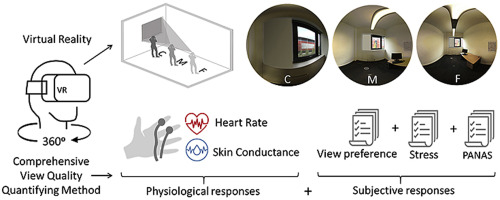In the world of measurement, accuracy is key. Whether it’s in manufacturing, construction, or scientific research, precise measurements are crucial for ensuring quality and reliability. One important aspect of achieving accurate measurements is understanding the concepts of proximity and baseline. These two terms may seem simple, but they play a significant role in the accuracy of measurements. In this blog post, we will delve into the world of proximity and baseline, exploring their definitions, applications, challenges, and future advancements.
Understanding the Concept of Proximity in Measurement
Proximity refers to the closeness or nearness of an object or point to another object or point. In the context of measurement, proximity is used to describe the distance between a measuring device and the object being measured. The closer the measuring device is to the object, the more accurate the measurement will be. This is because the measurement is taken at a shorter distance, reducing the potential for errors caused by external factors such as temperature, humidity, or vibrations.
Factors Affecting Proximity Measurements
There are several factors that can affect the accuracy of proximity measurements. These include:
- Environmental Conditions: As mentioned earlier, temperature, humidity, and vibrations can all impact the accuracy of proximity measurements. For example, changes in temperature can cause materials to expand or contract, altering their dimensions and therefore affecting the measurement.
- Material Properties: Different materials have different properties, which can also affect proximity measurements. For instance, materials with reflective surfaces can cause interference with laser-based measuring devices, leading to inaccurate readings.
- Measurement Device Calibration: Just like any other measuring instrument, proximity sensors need to be calibrated regularly to ensure accurate readings. Failure to calibrate the device can result in deviations from the actual measurements.
Types of Proximity Sensors
There are various types of proximity sensors used in different industries, each with its own advantages and limitations. Some of the most common types include:
- Inductive Proximity Sensors: These sensors use an electromagnetic field to detect the presence of metallic objects within their range. They are commonly used in manufacturing and automation industries.
- Capacitive Proximity Sensors: These sensors use changes in capacitance to detect the presence of objects. They are suitable for detecting both metallic and non-metallic objects, making them useful in a wide range of applications.
- Ultrasonic Proximity Sensors: These sensors use sound waves to detect the presence of objects. They are ideal for measuring distances and can be used in various industries, including automotive, medical, and robotics.
- Laser Proximity Sensors: These sensors use laser beams to measure distance and are highly accurate. They are commonly used in industrial applications such as quality control and inspection.
Establishing a Baseline for Accurate Measurements
A baseline is a reference point or starting point used for comparison. In measurement, establishing a baseline is crucial for ensuring accuracy and consistency. A baseline provides a standard against which all subsequent measurements can be compared, allowing for deviations to be identified and corrected.
Importance of a Baseline in Measurement
Establishing a baseline is essential for several reasons:
- Consistency: By using a baseline, measurements can be taken consistently over time, ensuring that any changes or deviations can be detected and addressed.
- Accuracy: A baseline provides a reference point for measurements, reducing the potential for errors caused by external factors.
- Quality Control: In industries where precision is critical, such as manufacturing, having a baseline allows for quality control measures to be implemented, ensuring that products meet the required standards.
Challenges in Maintaining Proximity and Baseline
While proximity and baseline are crucial for accurate measurements, there are challenges that can arise in maintaining them. Some of these challenges include:
- External Factors: As mentioned earlier, environmental conditions and material properties can affect proximity measurements. These factors can also impact the baseline, making it difficult to maintain consistency in measurements.
- Human Error: In some cases, human error can lead to deviations from the baseline. This can happen during calibration or when taking measurements, resulting in inaccurate readings.
- Equipment Malfunction: Just like any other equipment, measuring devices can malfunction, leading to deviations from the baseline. Regular maintenance and calibration can help prevent this, but unexpected malfunctions can still occur.
Challenges and Solutions in Maintaining Proximity and Baseline

Maintaining proximity and baseline can be a challenging task, but there are solutions that can help overcome these challenges. Some of these solutions include:
Regular Calibration and Maintenance
As mentioned earlier, regular calibration and maintenance of measuring devices is crucial for ensuring accurate measurements. This involves checking and adjusting the device to ensure that it is functioning correctly and providing accurate readings. By following a strict maintenance schedule, potential issues can be identified and addressed before they affect the accuracy of measurements.
Implementing Quality Control Measures
In industries where precision is critical, implementing quality control measures can help maintain proximity and baseline. This can involve using multiple measuring devices to cross-check measurements, as well as conducting regular inspections and audits to ensure that all equipment is functioning correctly.
Using Advanced Technologies
Advancements in technology have led to the development of more sophisticated measuring devices that are less susceptible to external factors. For example, laser-based sensors can now compensate for changes in temperature, reducing the impact of environmental conditions on measurements.
Applications of Proximity and Baseline in Various Industries
The concepts of proximity and baseline are used in various industries, each with its own unique applications. Some of the most common industries where these concepts are utilized include:
Manufacturing
In manufacturing, proximity and baseline play a crucial role in ensuring the quality and consistency of products. Proximity sensors are used to measure dimensions and detect defects, while a baseline is established to ensure that all products meet the required standards.
Construction
In the construction industry, proximity sensors are used for various purposes, such as measuring distances, detecting underground utilities, and monitoring structural integrity. A baseline is also established to ensure that all measurements are accurate and consistent throughout the construction process.
Healthcare
In the healthcare industry, proximity sensors are used in medical devices such as ultrasound machines and blood glucose monitors. These sensors help healthcare professionals take accurate measurements and make informed decisions about patient care.
Robotics
Proximity sensors are widely used in robotics for obstacle detection and navigation. By establishing a baseline, robots can accurately measure distances and avoid collisions, making them more efficient and safe to use.
Innovations and Advancements in Proximity and Baseline Technologies
As technology continues to advance, so do the concepts of proximity and baseline. There have been several innovations and advancements in these technologies, leading to more accurate and reliable measurements. Some of these advancements include:
Wireless Proximity Sensors
Wireless proximity sensors eliminate the need for physical connections between the sensor and the measuring device. This makes them more versatile and easier to use in various applications.
Smart Proximity Sensors
Smart proximity sensors use artificial intelligence and machine learning algorithms to analyze data and make adjustments in real-time. This allows for more precise measurements and reduces the impact of external factors on readings.
Non-Contact Measurement Techniques
Non-contact measurement techniques, such as laser scanning and photogrammetry, have become increasingly popular in recent years. These techniques use advanced sensors and cameras to capture 3D data, allowing for highly accurate and detailed measurements.
Case Studies and Examples of Successful Implementations

To further understand the importance of proximity and baseline in measurement, let’s look at some case studies and examples of successful implementations.
Automotive Industry
In the automotive industry, proximity sensors are used for various purposes, such as parking assistance, collision avoidance, and blind spot detection. By establishing a baseline, these sensors can accurately measure distances and provide real-time feedback to drivers, making vehicles safer and more efficient.
Aerospace Industry
In the aerospace industry, proximity sensors are used for precision measurements during the manufacturing process. These sensors help ensure that all components meet the required specifications, reducing the risk of failures or malfunctions in flight.
Medical Industry
In the medical industry, proximity sensors are used in various devices, such as blood pressure monitors and pulse oximeters. These sensors provide accurate readings, allowing healthcare professionals to make informed decisions about patient care.
Best Practices for Ensuring Accurate Proximity and Baseline Measurements
To ensure accurate measurements, it is essential to follow best practices when using proximity and baseline technologies. Some of these best practices include:
- Regular Calibration and Maintenance: As mentioned earlier, regular calibration and maintenance of measuring devices is crucial for ensuring accuracy.
- Use Multiple Sensors: In industries where precision is critical, using multiple sensors to cross-check measurements can help identify any deviations from the baseline.
- Consider Environmental Factors: When using proximity sensors, it is important to consider environmental factors that may affect the accuracy of measurements. This can include temperature, humidity, and vibrations.
- Train Personnel: It is crucial to train personnel on how to use measuring devices correctly and follow proper procedures for taking measurements. This can help reduce the potential for human error.
- Stay Up-to-Date with Technology: With advancements in technology, it is important to stay up-to-date with the latest developments in proximity and baseline technologies. This can help improve the accuracy and efficiency of measurements.
The Future of Proximity and Baseline in Measurement Systems
As technology continues to advance, the future of proximity and baseline in measurement systems looks promising. With the development of more sophisticated sensors and techniques, we can expect to see even more accurate and reliable measurements in various industries. Additionally, the use of artificial intelligence and machine learning algorithms will further improve the accuracy and efficiency of measurements.
Impact of Proximity and Baseline Deviations on Measurement Outcomes
Deviation from the baseline can have a significant impact on measurement outcomes. Inaccurate measurements can lead to faulty products, safety hazards, and financial losses. For example, in the manufacturing industry, a deviation from the baseline can result in defective products that may need to be recalled, causing delays and financial losses for the company.
Conclusion
In conclusion, proximity and baseline are essential concepts in the world of measurement. By understanding these concepts and following best practices, we can ensure accurate and reliable measurements in various industries. With advancements in technology, we can expect to see even more precise and efficient measuring systems in the future. It is crucial to stay updated with these developments and continuously strive for accuracy and consistency in measurements.
.
Read more blogs : Rusty Spur Bar: Scottsdale’s Lively Entertainment Hotspot


